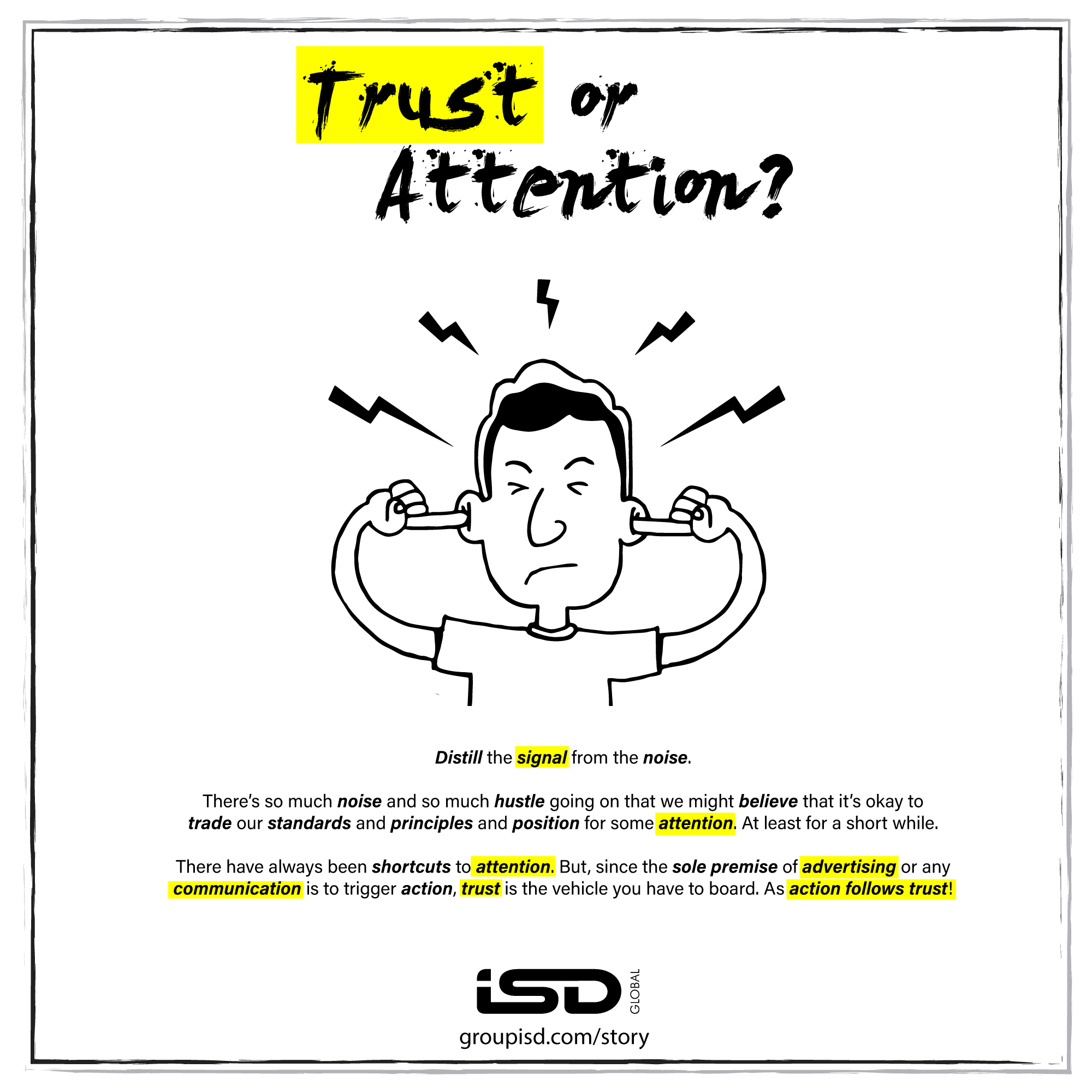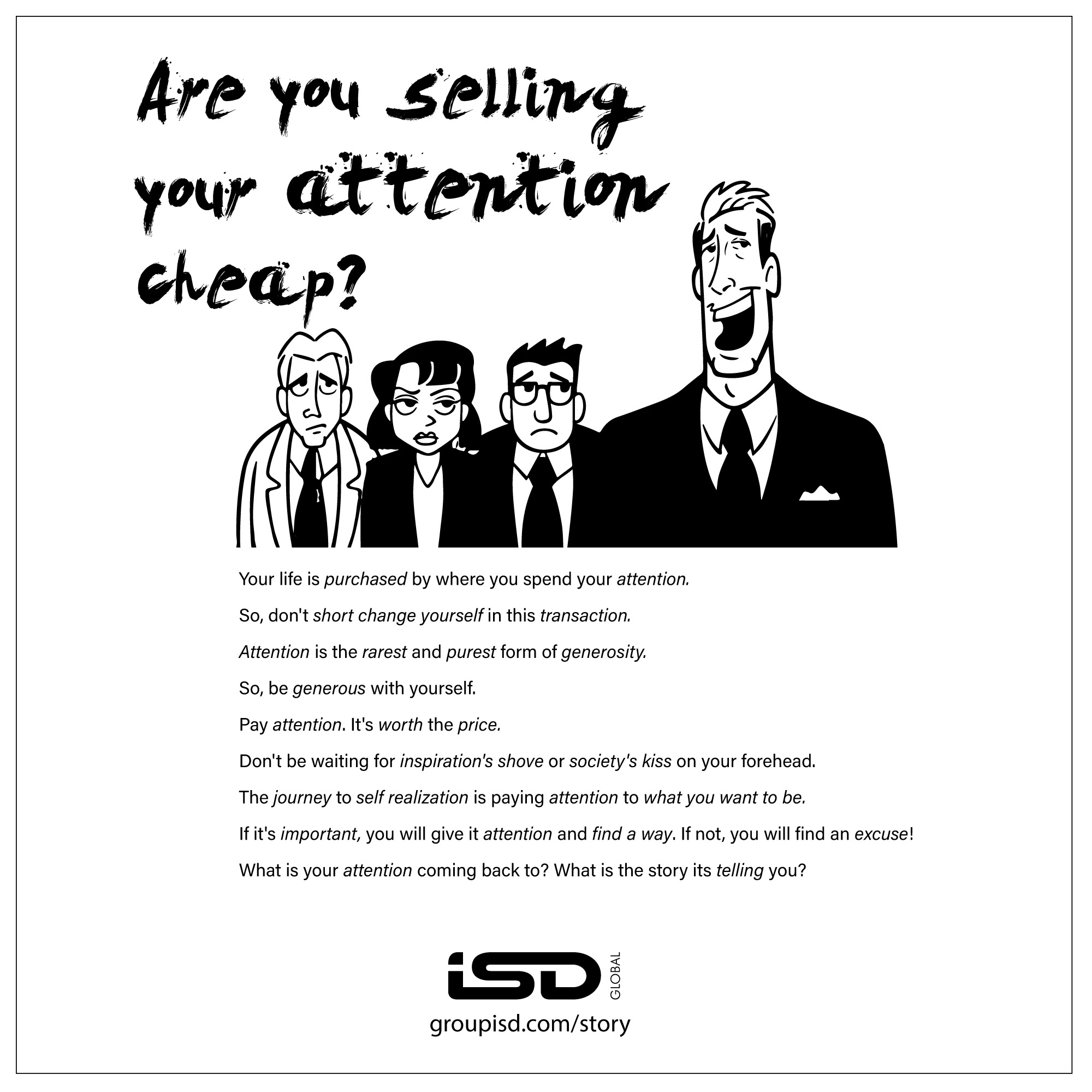There is a myth that needs to be debunked- the sooner, the better. That attention is scalable. Adding to team members, pumping in more resources, automating processes etc are all tried by organisations and entrepreneurs alike in the hope that they can scale attention. Alas, all these are sub optimal tactics and do not deliver.
Paul Graham‘s essay “Do Things That Don’t Scale” highlights this paradox beautifully. He argues that the most impactful actions often require personal engagement and a hands-on approach, which are fundamentally unscalable.
Think about it. When was the last time you truly gave your undivided attention to something? In our hyper-connected world, we’re constantly bombarded with notifications, emails, and messages. At ISD Global, we’ve observed this phenomenon across industries – from healthcare to fintech, from education to retail. The more we try to expand our attention bandwidth, the thinner it gets stretched.

Brands, marketers, and businesses have been conditioned to believe that more visibility equals more success. But is that really the case? The law of diminishing returns is at play here—more exposure does not necessarily translate to more engagement, let alone trust. In the world of branding and communication, companies often fall into the trap of believing that more is better—more ads, more social media posts, more emails. But the reality is, without a strategic approach, this only leads to diminishing returns. Attention doesn’t scale linearly; it’s not a numbers game. It’s a quality game.
There is less to more than you think.
Take a moment to consider the barrage of content that bombards us daily. Newsletters, notifications, live streams, reels, tweets (or should we say X-posts?), all screaming for that sliver of undivided attention. But does it work? Not quite. The problem isn’t that people aren’t paying attention—it’s that they can’t, not at the scale businesses want them to.

The future of work isn’t about expanding attention – it’s about allocating it wisely. It’s about understanding that while technology can scale indefinitely, human attention remains precious and finite. In our consulting practice, we’re seeing organizations that embrace this reality outperform those still chasing the myth of unlimited attention spans.
We constantly need to remind brands that grabbing eyeballs isn’t the same as holding minds. The brands that truly succeed in today’s hyper-noisy world are those that focus on depth rather than breadth. Instead of chasing vanity metrics like views and impressions, they double down on meaningful engagement. Scaling attention isn’t about increasing reach; it’s about increasing resonance. And that happens when brands shift from merely broadcasting messages to fostering genuine connections.
So, what’s the new attention paradigm? What’s the way forward? Instead of stretching attention thin, we need to deepen it. Here are a few ways to do that:
Focus on substance, not just spectacle. Virality fades, but value endures.
Prioritize depth over width. A smaller, engaged audience is more powerful than a million passive viewers.
Create trust, not just noise. Attention is fleeting, but trust compounds over time.
At ISD Global, we champion brands that defy the attention economy’s rat race. We believe in meaningful engagement, disruptive storytelling ( we craft what is called UFP- the Unique Feelings Proposition ) , and an unlearning-first approach that shapes the future of brand communication.
So, the next time someone tells you that scaling attention is the key to success, ask them this: Is it attention they’re after, or impact?
Because at the end of the day, only one of those truly scales.
